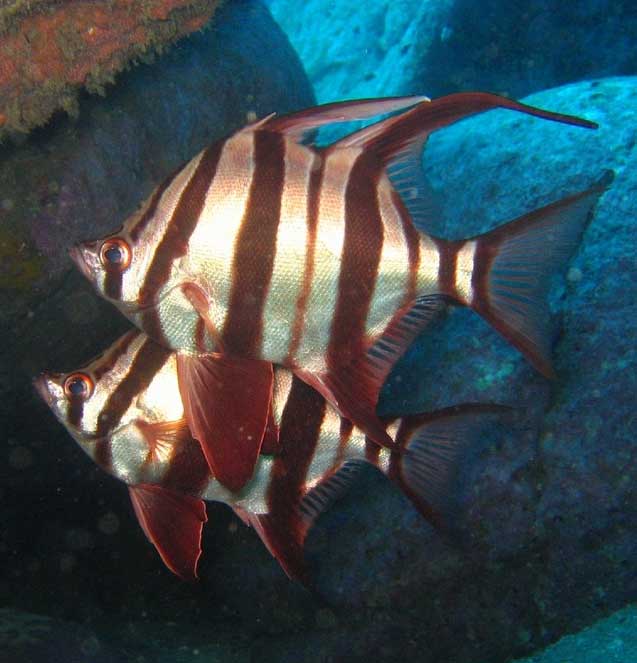Enoplosus armatus (*) Cladus: Eukaryota Name Enoplosus Lacepède, 1802 References * Enoplosus Report on ITIS
Enoplosus armatus is a species of perciform fish, the only species in the family Enoplosidae. It is native to reefs in the Indian and western Pacific Oceans, and to the coastal waters of Australia. Originally classified with the butterflyfishes, it has a similar deep and compressed body but is easily distinguished by its silver-and-black zebra-striped coloration, and by its two prominent dorsal fins, the second of which is very long, sickle-shaped, and has poisonous spines. It grows up to 50 cm long. A fisherman's name, Old wife, refers to the sound it makes when caught, caused by it grinding its teeth.[1][2] The vernacular names include Bastard dory, derived from the french doré (golden), and Zebra-tail or -fish.[3] The first description of the species in 1790, one of the earliest of an Australian fish, was by John White in Journal of a voyage to New South Wales.[1] His description as Chætodon armatus (The Long-Spined Chaetodon) was as follows:[4] Chaetodon albescens, corpore, fasciis septem nigris, spinis pinnae dorsalis sex, tertia longissima. Whitish Chaetodon, with seven black stripes on the body. Six spines on the dorsal fin, the third very long. This appears to be a new and very elegant species of the genus Chaetodon. The total length of the specimen was not more than four inches. The colour a silvery white, darker, and of a bluish tinge on the back; the transverse fasciae, or bands, of a deep black; the fins and tail of a pale brown. The third ray or spine of the first dorsal fin is much longer than the rest. This was accompanied by an illustration that is attributed to Thomas Watling, with a caption of The Pungent Chaetedon.[5] References 1. ^ a b Morrison, Sue; Storrie, Ann (1999). Wonders of Western Waters. Como, Western Australia: Department of Conservation and Land Management. pp. 119. ISBN 0 7309 6894 4. * Froese, Rainer, and Daniel Pauly, eds. (2006). "Enoplosidae" in FishBase. January 2006 version.
Source: Wikipedia, Wikispecies: All text is available under the terms of the GNU Free Documentation License |
|

